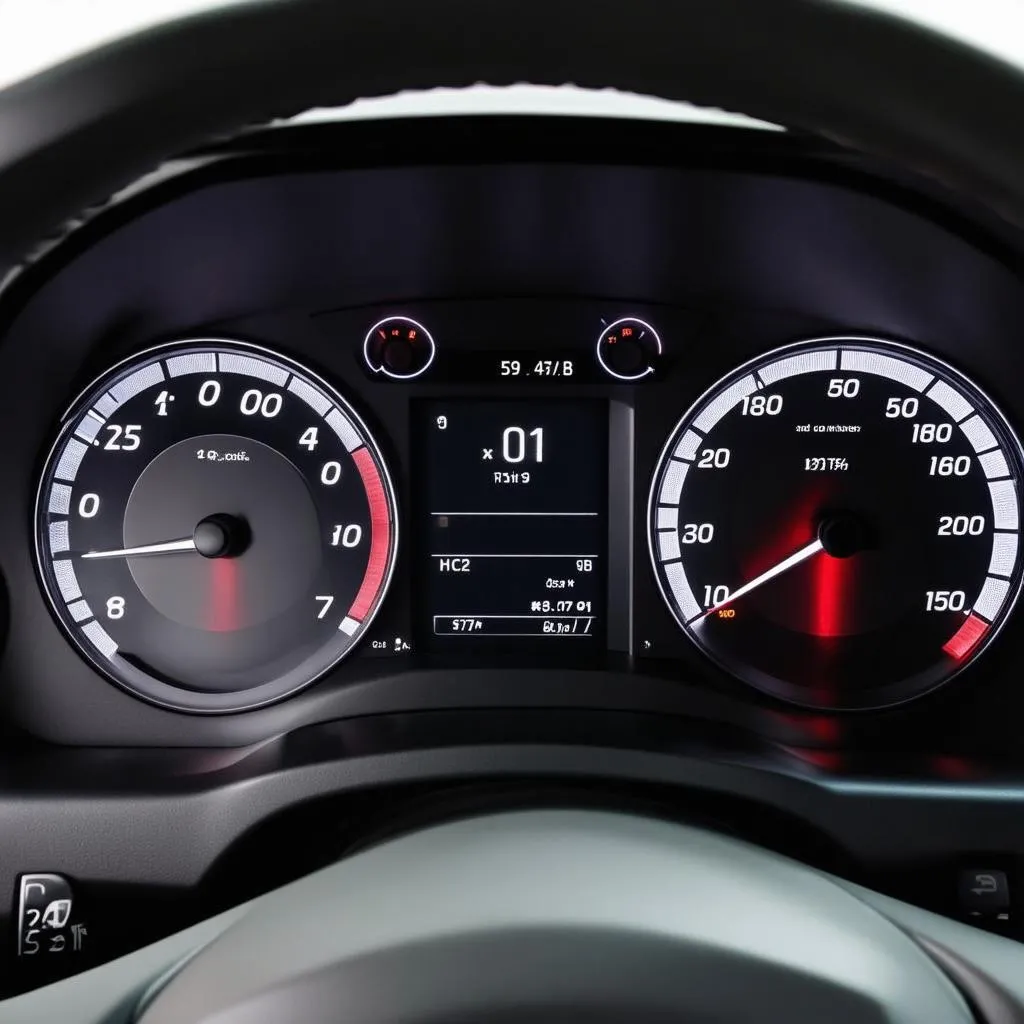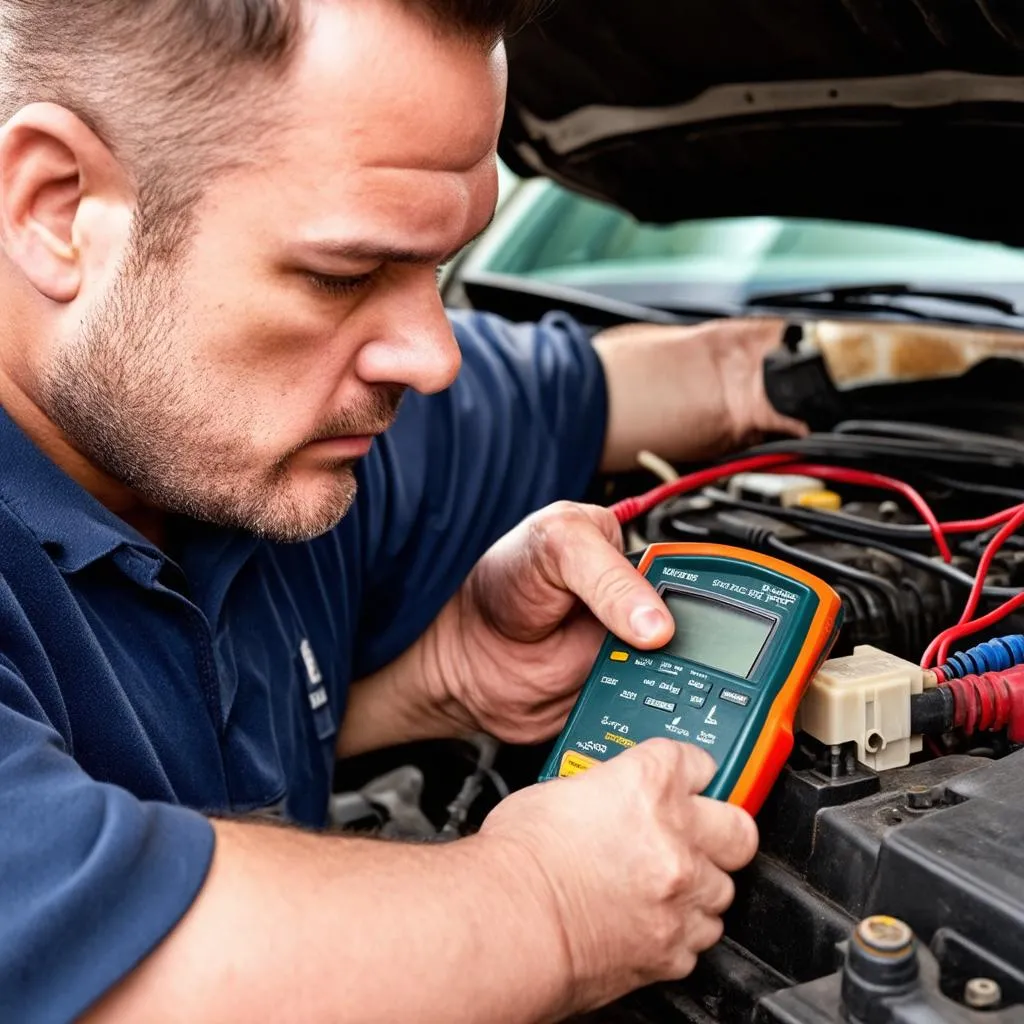“A smooth journey is often a sign of a well-maintained engine.” This age-old saying reflects the importance of understanding your car’s inner workings, especially when it comes to those cryptic trouble codes that pop up on your dashboard. Today, we’re diving deep into the world of OBD code P0502, a common yet often misunderstood issue that can leave drivers feeling perplexed.
Understanding the Language of Your Car: What is OBD Code P0502?
Imagine this: you’re cruising down the highway, enjoying the scenery, when suddenly your “Check Engine” light throws a wrench in your plans. You hook up your trusty OBD-II scanner and see the dreaded “P0502” staring back at you. What does it mean?
In essence, OBD code P0502 points to a problem with your vehicle speed sensor (VSS), specifically indicating that the engine control module (ECM) is detecting a signal that’s lower than expected. This sensor, a vital component of your car’s electronic nervous system, constantly monitors your vehicle’s speed and relays this information to the ECM. This data is crucial for managing various systems, including fuel injection, transmission shifting, and cruise control.
Decoding the P0502 Code: Symptoms, Causes, and Solutions
Just like a doctor deciphers symptoms to diagnose an ailment, understanding the potential causes behind a P0502 code is key to finding the right solution for your car troubles.
Symptoms You Might Encounter:
- Fluctuating speedometer: Perhaps the most noticeable symptom is an erratic speedometer needle that jumps or drops unexpectedly.
- Poor transmission shifting: A faulty VSS signal can disrupt smooth gear changes, leading to rough shifting or even getting stuck in a particular gear.
- Decreased fuel efficiency: As the ECM struggles to regulate fuel delivery with inaccurate speed data, you might notice a dip in your gas mileage.
- Illuminated Check Engine Light: This persistent light serves as a general warning, urging you to investigate the underlying issue.
Common Culprits Behind a P0502 Code:
- Faulty Vehicle Speed Sensor: Over time, the VSS itself can wear out, get damaged, or become misaligned, leading to inaccurate readings.
- Wiring Problems: Damaged, corroded, or loose wiring between the VSS and the ECM can disrupt the signal transmission.
- Damaged Vehicle Speed Sensor Drive Gear: This gear, responsible for converting mechanical rotation into an electrical signal for the VSS, can wear out or break, hindering accurate readings.
- Malfunctioning ECM: While less common, a faulty ECM can also misinterpret or fail to process the VSS signal correctly.
Finding Your Fix: Steps to Take
- Verify the Code: Before diving into repairs, double-check the code using a different OBD-II scanner to rule out any reader errors.
- Inspect the Vehicle Speed Sensor: Locate the VSS (usually on the transmission case or rear axle) and examine it for visible damage, debris, or loose connections.
- Check the Wiring: Carefully trace the wiring harness connected to the VSS for any signs of wear and tear, loose connections, or corrosion.
- Inspect the Drive Gear: If accessible, examine the VSS drive gear for damage or wear.
- Consult a Professional: If the issue persists, it’s best to consult a qualified mechanic experienced in diagnosing and repairing electrical system issues.
 Car Speedometer Dashboard
Car Speedometer Dashboard
The Importance of Timely Action
Addressing a P0502 code promptly is crucial. Neglecting this issue can lead to more severe problems, including transmission damage, decreased fuel economy, and potential safety hazards due to erratic vehicle behavior.
Beyond the Technical: The Spiritual Side of Smooth Journeys
While we’ve delved into the technicalities of OBD code P0502, there’s often a deeper meaning associated with a smooth journey. In many cultures, a well-maintained car signifies a well-balanced life, reflecting a sense of control, preparedness, and attention to detail.
Just as a smooth-running engine requires regular maintenance and care, so too do our personal journeys require attention to our well-being. Addressing the “check engine” lights in our own lives – whether physical, emotional, or spiritual – allows us to navigate life’s twists and turns with greater ease and resilience.
FAQs about OBD Code P0502
Q: Can I still drive my car with a P0502 code?
While you might be able to drive for a short distance, it’s not recommended. Driving with a faulty VSS can lead to further damage and safety concerns.
Q: How much does it cost to fix a P0502 code?
The cost varies depending on the root cause. A simple sensor replacement might be relatively inexpensive, while more complex repairs involving wiring or the ECM could be pricier.
Q: Can a bad battery cause a P0502 code?
While a weak battery can sometimes trigger various electrical gremlins, it’s unlikely to directly cause a P0502 code.
 Mechanic Inspecting Car Wiring
Mechanic Inspecting Car Wiring
Exploring Further: Related Resources and Car Models
For more insights into OBD-II codes and car maintenance tips, check out these related articles on techcarusa.com:
OBD code P0502 can affect a wide range of car manufacturers, including but not limited to:
- European Cars: BMW, Mercedes-Benz, Audi, Volkswagen, Volvo
- American Cars: Ford, Chevrolet, Dodge, Chrysler, Jeep
- Asian Cars: Toyota, Honda, Nissan, Hyundai, Kia
Need help diagnosing or fixing your car troubles? We’re here to help! Contact our team of auto repair experts via WhatsApp at +84767531508 for 24/7 support.
Your Journey to a Smoother Ride Starts Now
Understanding your car’s signals is the first step to a smoother, safer, and more enjoyable driving experience. By addressing the underlying causes of OBD code P0502 and staying proactive with your car maintenance, you can ensure many miles of worry-free driving. Remember, a well-maintained car is a reflection of a well-prepared driver.
We encourage you to share your experiences, ask questions, and engage with our community in the comments section below. Safe travels and happy driving!